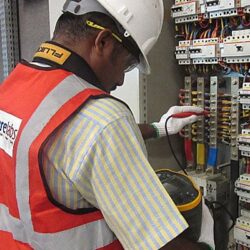Most people think that when a car is scrapped, it disappears forever. It is crushed, melted, and forgotten. But the truth is very different. Every old car has a hidden journey after it leaves the road. From recycled steel to reused parts, scrapped vehicles continue to play a major role in keeping transport systems alive and supporting the economy.
The Beginning of the End
When a car reaches the end of its working life, it is often due to wear, damage, or high repair costs. Instead of letting it sit unused, many people choose to sell it for scrap. Once a car is handed over, a process begins that focuses on recovery and reuse rather than destruction. https://northbrisbanewreckers.com.au/
In Australia, more than half a million vehicles are dismantled each year. This figure from the Australian Bureau of Statistics highlights how large the automotive recycling industry has become. Every car that enters a scrapyard contributes valuable materials that can be given new life.
Step One: Removing Fluids and Hazardous Materials
Before any parts are removed, the car goes through a process known as depollution. This involves draining fluids such as oil, coolant, and petrol. These substances can harm the environment if not handled correctly. Each fluid is carefully collected, stored, and either reused or disposed of under strict environmental standards.
This step is vital because even small leaks can contaminate soil and waterways. Recycling businesses in Australia are required to follow national guidelines to make sure the process is safe for both workers and nature.
Step Two: Dismantling for Parts
After depollution, the dismantling phase begins. Skilled workers remove every reusable item that can serve another purpose. Engines, transmissions, alternators, and radiators are often recovered, tested, and cleaned.
These parts are sold to repair shops, mechanics, and individuals who need replacements for older vehicles. This reduces the demand for newly manufactured components, which saves resources and energy.
For example, using a recycled car part consumes about 70% less energy than creating a new one from raw materials. This means that every salvaged component helps reduce the industry’s environmental footprint.
Step Three: Shredding and Sorting
Once the valuable parts are taken out, the rest of the car, often called the “shell,” is crushed into smaller pieces and sent for shredding. Shredders break down the metal into fine fragments. Magnets and other equipment then separate steel, aluminium, and copper from plastics and glass.
Steel recovered from scrap cars is a major resource for manufacturing. According to the World Steel Association, recycling steel saves up to 1.5 tonnes of iron ore and 0.5 tonnes of coal per tonne of steel reused. It also cuts carbon emissions by around 60%.
Step Four: Rebirth Through Recycling
The recycled metals and materials are melted and formed into new products. Recycled steel may find its way into new cars, buildings, tools, or household appliances. Aluminium is often reused for creating engine parts or body panels. Even plastic components, once treated, can be turned into new items like road barriers or construction materials.
This cycle of reuse helps conserve natural resources while keeping manufacturing costs under control. It also reduces the amount of waste sent to landfills, which supports Australia’s environmental sustainability goals.
Keeping Roads Alive Through Reuse
Scrapped cars are not just a source of metal; they are a source of parts that keep other cars on the road. Mechanics across the country rely on recycled components to repair vehicles quickly and at reasonable costs.
This system also supports older car models that are no longer in production. When manufacturers stop making parts, recycled items from scrapped cars become essential for keeping those vehicles in service. This ensures that fewer cars are abandoned and more are kept running safely on Australian roads.
Environmental and Economic Importance
Vehicle recycling has strong environmental and economic outcomes. It creates jobs in dismantling yards, recycling plants, and manufacturing sectors. It also reduces the need for mining raw materials, which helps protect Australia’s natural landscapes.
By recycling cars, the nation saves millions of litres of oil and prevents large amounts of carbon dioxide from being released into the atmosphere. Every scrapped vehicle becomes part of a system that supports cleaner production and responsible consumption.
Giving Junk Cars a Purpose
When a car stops running, it may still hold hidden value. Some auto recycling services in Australia help people turn their old vehicles into something useful. For example, North Brisbane Wreckers provides Cash for Junk Cars, offering car owners a simple way to sell unwanted vehicles while supporting recycling efforts. This process ensures that old cars are dismantled responsibly, parts are reused, and materials are recycled properly. It helps reduce waste and keeps useful resources in circulation, which benefits both the environment and the community.
The Future of Automotive Recycling
As technology changes, so does the recycling industry. Electric and hybrid cars bring new challenges, such as handling lithium batteries and advanced electronics. Australian companies are investing in better recycling systems to recover materials like rare metals and reduce waste from new vehicle designs.
The future focus is on creating circular systems where every car part can be reused or repurposed. This approach supports both sustainability and long-term resource management.
Final Thoughts
Scrapped cars do not simply vanish; they continue to contribute long after their last drive. From reused parts to recycled steel, every element of a scrapped car helps maintain the flow of materials that keeps the transport industry moving.
Selling an old vehicle for scrap is not the end of its story. It is the start of a new chapter that helps other cars run, supports jobs, and protects the planet. The next time an old car leaves your driveway, remember that its journey is far from over—it is simply taking a new path that keeps the roads alive.



